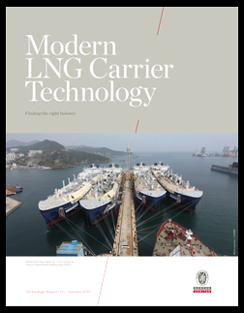Keeping up with LNG carrier technology
LNG carrier fleet growth and technological evolution are accelerating to meet the demand for gas in the push towards decarbonisaton
THE significant growth of the global fleet of liquefied natural gas carriers is testament to the importance and impact of gas on the transformation of both the shipping and energy markets.
Natural gas is a fuel of the future available today. The increase in demand is expected to be 2% annually by 2030. Chinese imports play a major role in this development: natural gas is expected to account for 11% of primary energy in China by 2030.
However, China’s appetite for energy is not the only factor driving the success of the gas: its environmental performance contributes significantly. Compared to fuel oil, its combustion emits around 20%-25% less CO2. It is also much cleaner than coal: when burned in power plants, it emits negligible quantities of sulphur dioxide and particulate matters, and reduces nitrogen oxide emissions by more than 80%.
The seaborne transportation of LNG has been recognised and managed since the 1960s, with the construction of the first liquefaction units and carriers exporting Algerian gas to the UK and France.
From the outset, Bureau Veritas supported operators, manufacturers, shipowners and shipyards, to ensure the safety and sustainability of the tankers and their equipment and easements onshore.
With the growth in demand for gas, development of production and transport capacities has accelerated, with the US establishing itself in just a few years as one of the leading production countries, thanks to shale gas fracking.
Technical developments have helped the LNG carrier industry evolve very rapidly in recent years. Cryogenic cargo containment system evolution, new engines and re-liquefaction systems have been at the core of recent developments to respond to charterers’ and shipowners’ needs.
BV, in a technology update on the sector, examines innovations in containment systems, propulsion methods and re-liquefaction systems.
 Click here to read
Click here to read
the white paper.

